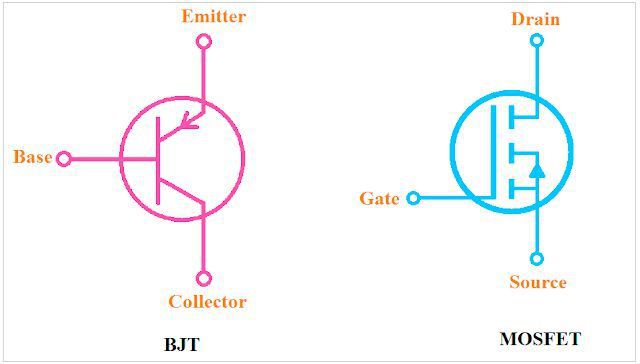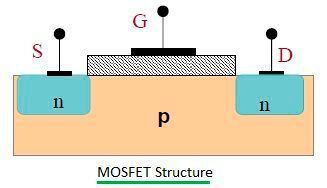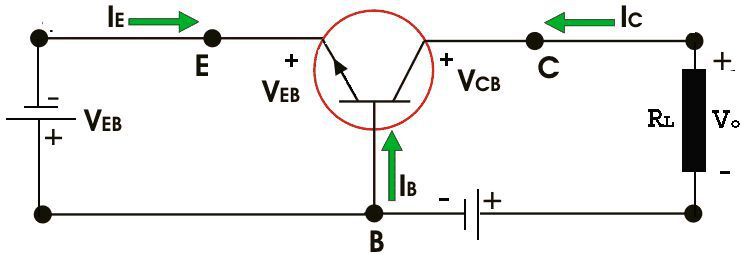Components – MOSFET vs. Transistor (BJT)
source: https://www.power-and-beyond.com/mosfet-vs-bjt-whats-the-difference-a-909006/
The Metal-Oxide-Semiconductor Field-Effect Transistor (MOSFET) and the Bipolar Junction Transistor (BJT) are two types of transistor that come in various packages, and those unfamiliar with electronics often struggle to decide which should be used in their projects.
While both the MOSFET and BJT are transistors, they work differently and exhibit different behaviours, therefore they are used in different ways.
What is MOSFET?
MOSFET is a kind of field effect transistor (FET) that consists of three terminals – gate, source, and drain. In a MOSFET, the drain is controlled by the voltage of the gate terminal, thus a MOSFET is a voltage-controlled device. The voltage that is applied across the gate controls how much current flows into the drain.
MOSFETs are available in two types, “p-channel” and n-channel”. Both of these types can either be in enhancement or depletion mode (see below). This means that in total, there are four different types of MOSFET.
In p-channel MOSFETs, the source and drain terminals are made of p-type semiconductor. Likewise, in n-channel MOSFETs, the source and drain terminals are made of n-type semiconductor. The gate terminal itself is made from metal and is detached from the source and drain terminals using a metal oxide. This level of insulation roots low power consumption and is the primary benefit of this type of transistor. This often sees MOSFETs being used in low-power devices or as building blocks to reduce power consumption.
Depletion mode: When the gate terminal’s voltage is low, the channel exhibits maximum conductance. Because gate terminal voltage is positive or negative, channel conductivity is decreased.
Enhancement mode: when the gate terminal’s voltage is low, the device does not conduct unless more voltage is applied to the gate terminal.
What is BJT?
he BJT is a current-driven device (in contrast, MOSET is voltage-driven) that is widely used as an amplifier, oscillator, or switch, amongst other things. A BJT has three pins – the base, collector, and emitter – and two junctions: a p-junction and n-junction.
There are two types of BJT – PNP and NPN. Each type has a large collector element and a large emitter element which are doped in the same way. In between these structures is a small layer of the other doping agent called the “base”. Current flows in the collector of a PNP and out of the emitter. In the NPN, the polarity is the opposite and current flows in the emitter and out the collector. In either case, the current’s direction in the base is the same as the collector.
Fundamentally, a BJT transistor’s operation is determined by the current at its base terminal. A small base current equals a small collector current, for example. A BJT’s output current is always equal to the input current multiplied by a factor known as a “gain”, typically 10—20 times the base current.
There are many differences between the MOSFET and BJT.
- The MOSFET (voltage controlled) is a metal-oxide semiconductor whereas the BJT (current controlled) is a bipolar junction transistor.
- While both have three terminals, these differ. The MOSFET has a source, drain, and gate whereas the BJT has a base, emitter, and collector.
- MOSFETs are ideal for high-power applications whereas BJTs are more commonly used in low-current applications.
- A BJT depends on the current at its base terminal whereas a MOSFET depends on the voltage at the oxide-insulated gate electrode.
- A MOSFET’s structure is inherently more complex than a BJT’s structure.
Which is better?
Both MOSFET and BJT have unique characteristics and their own pros and cons. Unfortunately, we cannot say which is “better” because the matter is highly subjective. There is not a straightforward and definitive answer to this question.
When choosing which to use in a project, one must consider many different factors to arrive at a decision. These include power level, drive voltage, efficiency, cost, and switching speed, amongst other things—this is where it really helps to know your project!
Generally, A MOSFET is usually more efficient in power supplies. In a battery-powered device where the load is variable and power supply is limited, for example, using a BJT would be a bad idea. However, if a BJT is used to power something that has a predictable current draw (LEDs, for example) then this would be fine because the base-emitter current can be set to a fraction of the LED current for higher efficiency.




